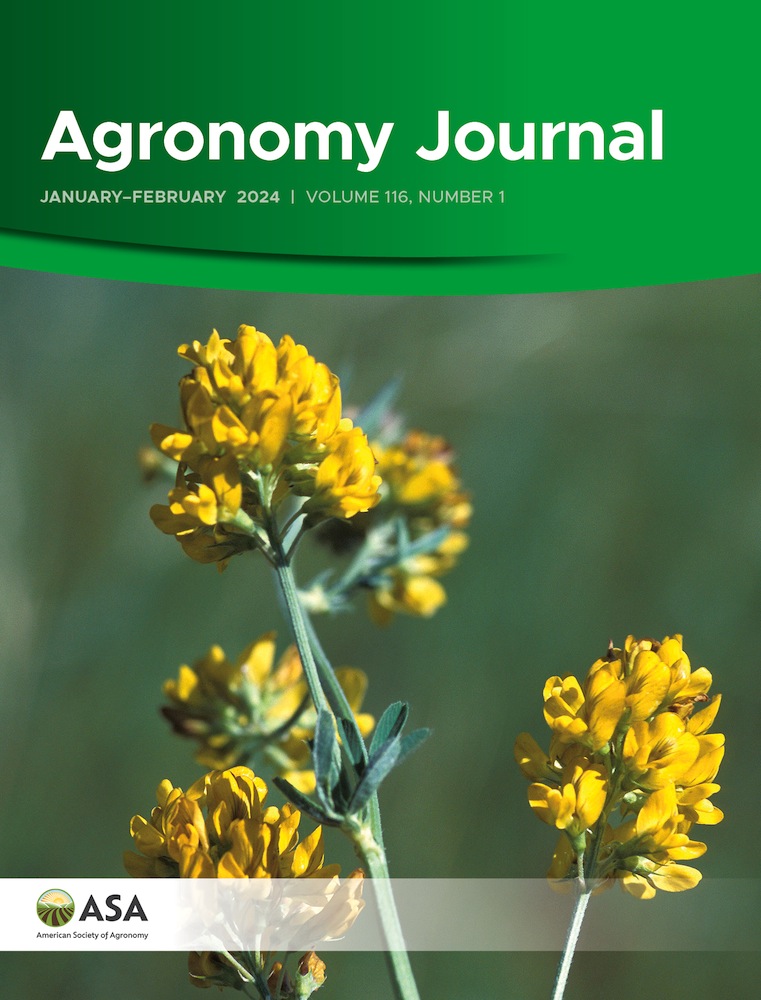Ver ítem
- xmlui.general.dspace_homeCentros Regionales y EEAsCentro Regional CórdobaEEA Marcos JuárezArtículos científicosxmlui.ArtifactBrowser.ItemViewer.trail
- Inicio
- Centros Regionales y EEAs
- Centro Regional Córdoba
- EEA Marcos Juárez
- Artículos científicos
- Ver ítem
Effects of climatic factors on carbohydrate composition of soybeans in Argentina
Resumen
Carbohydrates are the second largest component of soybean seeds and include soluble sugars, a major source of energy. However, some oligosaccharides such as the raffinose family of oligosaccharides (RFOs) are considered antinutritional factors. In Argentina, the soybean crop area shows high climatic variation during the seed-filling period (R5–R7), affecting seed composition. The objective of this work was to evaluate the effect of climatic traits on
[ver mas...]
Carbohydrates are the second largest component of soybean seeds and include soluble sugars, a major source of energy. However, some oligosaccharides such as the raffinose family of oligosaccharides (RFOs) are considered antinutritional factors. In Argentina, the soybean crop area shows high climatic variation during the seed-filling period (R5–R7), affecting seed composition. The objective of this work was to evaluate the effect of climatic traits on carbohydrate (CHO) seed composition of different cultivar types. Daily air temperature and solar radiation were measured during R5–R7 in two soybean varieties: (non-transgenic) ALIM3.14 and a commercial. Precipitation and evapotranspiration during the crop season (R1–R7) were used to calculate a hydric balance proxy. ALIM 3.14 showed a better CHO profile than the commercial soybean. ALIM 3.14 had lower stachyose and total RFOs (25.1 and 28.9 g kg−1) than the commercial cultivar (37.3 and 42.3 g kg−1), respectively. Air temperature explained variations in CHO. A decrease in sucrose was observed with the increase in mean temperature (−2.65 g 100 g−1 per °C). Sucrose/total RFO and total sugar concentration also declined with increasing mean temperature −0.10 g 100 g−1 per °C and −0.35 g 100 g−1 per °C, respectively. Soybean with desired nutritional profile for specialties, such as high sucrose concentration and low raffinose, were obtained at cool temperatures (<19.4°C) during seed filling. Producers and breeders can use this information to identify climatic variable thresholds that maximize the concentration of sugars in seeds and select traits and environments useful to improve soybean under climate warming conditions.
[Cerrar]

Autor
Marioli Nobile, Carla Georgina;
Balzarini, Mónica;
Grosso, Rubén;
Soldini, Diego Omar;
Zossi, Silvia;
Martinez, Maria Jose;
Fuente
Agronomy Journal 116 (1) : 73-82. (January/February 2024)
Fecha
2024-02
Editorial
Wiley
ISSN
0002-1962
1435-0645
1435-0645
Formato
pdf
Tipo de documento
artículo
Palabras Claves
Derechos de acceso
Restringido
 Excepto donde se diga explicitamente, este item se publica bajo la siguiente descripción: Creative Commons Attribution-NonCommercial-ShareAlike 2.5 Unported (CC BY-NC-SA 2.5)
Excepto donde se diga explicitamente, este item se publica bajo la siguiente descripción: Creative Commons Attribution-NonCommercial-ShareAlike 2.5 Unported (CC BY-NC-SA 2.5)


